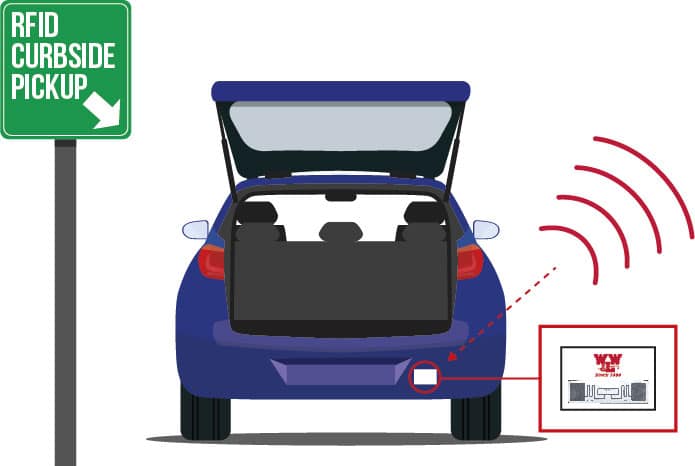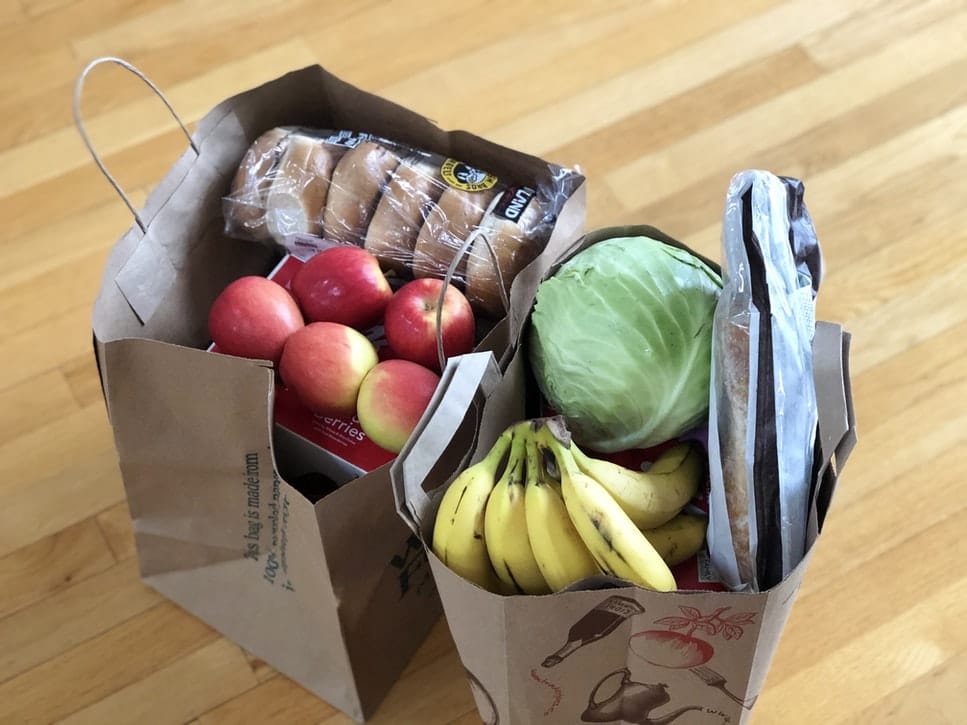Is RFID Grocery Pickup the Next Big Win for Technology?
Weldon, Williams & Lick thinks so.
Curbside pickup started as an expedient and is now an expectation for grocery stores. RFID technology can help supermarkets provide curbside pickup at the highest levels of service.
The first generation of RFID applications in supermarkets focused on the in-store experience for employees and customers. RFID tagging enabled accurate real-time inventory control, and minimizing or eliminating point-of-sale interactions. The next generation may follow the customer experience by shifting outside the store, doing more to support customers, employees and vendors for curbside pickup.
Grocery delivery services were one of the beneficiaries of 2020. By the end of the year, though, some retailers started to question their relationships with those companies and the percentages of each sale they charged. As one supermarket CEO told the Wall Street Journal, “We don’t think we make money from an Instacart order,“ going on to say that delivery services increase revenue even if they don’t contribute to profits. As a result, for every grocery store that welcomed a shopping and delivery service at their store, another at least considered bringing their delivery service in-house.
The middle ground between traditional shopping and delivery is curbside pickup. Supermarkets and other retailers use their own employees to provide this service, helping them keep down the cost. The combination of convenience and habit formation means that curbside service will not go away when all things coronavirus finally do. Customers will continue to want to pull into a parking spot, pop the trunk and drive off with their groceries a few minutes later. As a result, stores will need to develop their physical infrastructure to meet this demand.
Grocery stores were built for shopping, not pickup
Stores are not set up to have a steady stream of employees moving in and out of the building, pushing carts and crates, cutting across the main flow of parking lot traffic. Grocery stores usually have one wide main entrance, a consideration that has as much to do with the intended flow of customer traffic inside the store (start at produce, finish at the register – we all know how it goes) as it does basic ingress and egress. Employee entrances are usually a single door off to the side or around back, and loading docks are, obviously, all the way around the back.
With curbside delivery service, employees are regularly travelling in and out of the store, moving loads that range from the average single customer’s to something more befitting the loading dock, if they are taking multiple large orders out to the parking lot at once.
This can clog up the customer entrance, which is as bad for customer satisfaction as it is for social distancing. Some stores repurposed an employee entrance for their curbside pickup team, but those doors were not designed for frequent passage by people pushing carts or carrying loads. Just the opposite. They are usually heavy, hinged doors requiring one hand to scan a badge and another to open the door. Not very useful for someone on the move with things in both hands.
Nor are grocery stores set up for anything resembling a drive-thru. There’s no lane that wraps around the store, ending at a small window where the employees hand the customer their order. Even if there was, the size of the order would require a much different build-out than fast-food restaurants.
Grocery store employee RFID tags keep them and customers moving freely
New stores may be built to facilitate curbside service, but existing stores do not have much leeway in changing their building or parking lot design. They will need to modify what they can to facilitate curbside delivery.
RFID tags are one way grocery stores can evolve towards a growing curbside delivery market.
Supermarkets cannot detract from the in-store customer experience as they improve their curbside operations. One priority will be ensuring that curbside employees do not create a chokepoint at the entrance or exits that interferes with in-store shoppers. Stores will either need a dedicated door – one that can support the size of the carts the employees are using – or will have to improve flow through the main door.
RFID access tags for employees will make things easier for the employees and will keep them moving through the doors. As an employee pushes the cart or carries bags towards the door, a mid-range RFID door access system will open the door for them without having to stop, put things down and fumble with a tag. RFID door controls are more reliable and work at a greater distance than standard automatic door sensors. Those sensors will still be in place for customers, but the doors could be under dual control, ensuring the employees are never in the customer’s way.
If the store chooses to keep the curbside pickup staff away from the main door, RFID can make it easier for the staff to go in and out of the employees’ door.
RFID-enabled parking lots remove friction from grocery store pickup
Stores could also provide their curbside customers with an RFID tag of their own, similar to a parking lot hangtag or windshield decal. When a customer pulls into a curbside delivery parking spot, their RFID tag will let the employees know that the customer has arrived and which spot they are in.
Now you might be thinking: Isn’t that a bit much? It’s not like it’s hard for the customer to tap their app to let the store know they are there.
But it’s still one more thing the customer has to do, one more friction point (or sticky point, depending on your preference).
When Amazon opened the Amazon Go store in Seattle, they wanted customers “to feel like they’re stealing.” Customers would take an item off the shelf and put it in their bag, and then walk out the door. Amazon’s technology ensured they weren’t actually stealing, but even scanning your app at an unmanned point-of-sale a la Apple Pay was too much friction for Amazon’s ideal experience. When deciding whether to tolerate a minimal slow-down point or demand no slow-down points, well, it was never really a decision for them. As is often the case, Amazon’s standard will eventually become industry standard.
RFID was one of the technologies powering Amazon Go, and will only grow its role in the grocery store experience.
Eventually, RFID will let stores return their curbside delivery parking spots to in-store shoppers. RFID vehicle tags will allow drivers to queue up at some kind of grocery drive-thru. A display inside the employee area will let the staff know when a customer is on the lot, where they are in line and when to wheel out which order. All the data from this system will then allow the store to improve their operations, reducing wait times, setting the right staffing levels and ensuring safe and efficient traffic through the parking lot
Curbside pickup will be another differentiator in a tight market
From runs on certain products to new modes of shopping, grocery stores have had to be as agile as any industry over the last year. RFID systems can help grocery stores make the transition from on-the-fly “will this work” to a more stable and profitable way of operating. Curbside pickup isn’t going anywhere, so the supermarkets that do it best will have a significant advantage going forward.
WW&L has provided RFID infrastructure to sports arenas, stadiums, commercial parking lots, concert venues, museums and, yes, grocery stores. Get in touch with us to talk through how RFID can improve your curbside pickup services.



